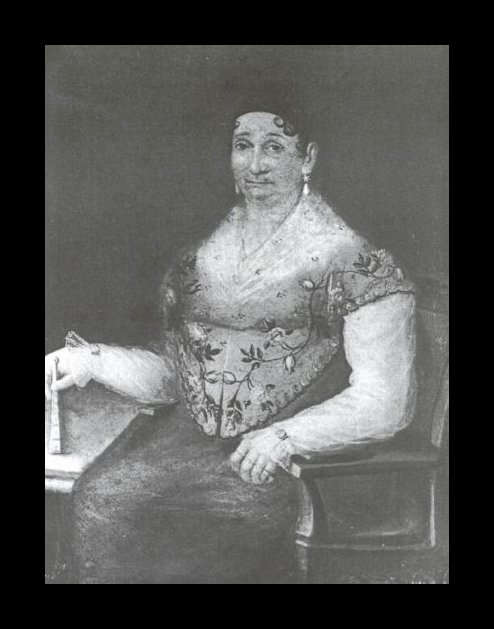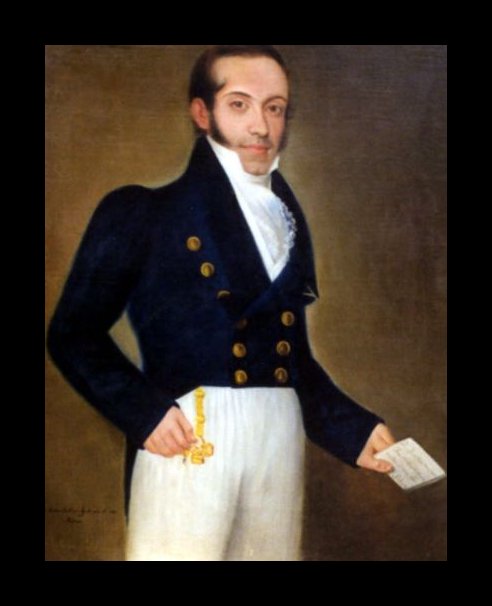Vicente Escobar y de Flores (1762-1834)
Get a Escobar Certificate of Authenticity for your painting (COA) for your Escobar drawing.
For all your Escobar artworks you need a Certificate of Authenticity (COA) in order to sell, to insure or to donate for a tax deduction.
Getting a Escobar Certificate of Authenticity (COA) is easy. Just send us photos and dimensions and tell us what you know about the origin or history of your Escobar painting or drawing.
If you want to sell your Escobar painting or drawing use our selling services. We offer Escobar selling help, selling advice, private treaty sales and full brokerage.
We have been authenticating Escobar and issuing certificates of authenticity since 2002. We are recognized Escobar experts and Escobar certified appraisers. We issue COAs and appraisals for all Escobar artworks.
Our Escobar paintings and drawings authentications are accepted and respected worldwide.
Each COA is backed by in-depth research and analysis authentication reports.
The Escobar certificates of authenticity we issue are based on solid, reliable and fully referenced art investigations, authentication research, analytical work and forensic studies.
We are available to examine your Escobar painting or drawing anywhere in the world.
You will generally receive your certificates of authenticity and authentication report within two weeks. Some complicated cases with difficult to research Escobar paintings or drawings take longer.
Our clients include Escobar collectors, investors, tax authorities, insurance adjusters, appraisers, valuers, auctioneers, Federal agencies and many law firms.
We perform Vicente Escobar Y De Flores art authentication, appraisal, certificates of authenticity (COA), analysis, research, scientific tests , full art authentications. We will help you sell your Vicente Escobar Y De Flores or we will sell it for you.

After Jose Nicolas De la Escalera was Vicente Escobar. Escobar was the second truly Cuban artist in history whose art is still in existence today. Escobar was not only one of the first Cuban natives to being painting in a style other than “primitive,” but was also the first to open a painting workshop/studio in Cuba.
Escobar painted in the Classical style during the Colonial era, and was best known for his portraits of the royal court. He would mostly paint portraiture of the generals and social ladies of Havana high society. However, it was through a very rare and interesting history that this came to be.
In Cuba in the 1700s, only “white” painters were allowed to come to court and paint for nobility. Escobar was a native Cuban, and was considered “black.” However, his style must have impressed the Cuban aristocrats because he was in high demand, despite his social status. However, through paperwork and royal decrees, Escobar bought his way into the royal court and was issued a certificate of “blood purity.” Therefore, in the Havana art world, Escobar is sometimes mentioned as “the black painter who died being white.” Eventually, Escobar was appointed Royal Court Artists by the Spanish Queen.
Though little is known about his formal training, many have compared his works to that of Goya. His lively color palate is reminiscent of Spanish Realism, and Escobar employed some of the same methods as Goya in his portraits by posing them in certain angles. By doing this, Escobar was able to capture the same kinds of darks and lights that are familiar in Spanish art. His subjects often have the stiff and cold characteristics that come along with portraits of nobility.
While most of Escobar’s existing works are in Cuba, the possibility for them to exist elsewhere is quite great. Though Escobar probably never traveled abroad himself, his wealthy clients certainly must have. Some of his most frequent commissions were for naval captains, who may have brought portraits of themselves or their family back to Spain or other parts of Europe. Due to the similarity of Escobar’s style to that of many Spanish artists, some of his work could have been wrongly authenticated or otherwise ignored.
Today, Escobar’s work hangs in museums in Havana and all over Cuba. Escobar was said to have helped to characterize the transition from 18th to 19th century painting in Cuba. To own one of his oil paintings would not only be a valuable asset to the art world, but to history as well. Could you possibly own a piece of art piece of art from Vicente Escobar? We would be happy to help you authenticate a piece of art from this great historic Cuban artist.

